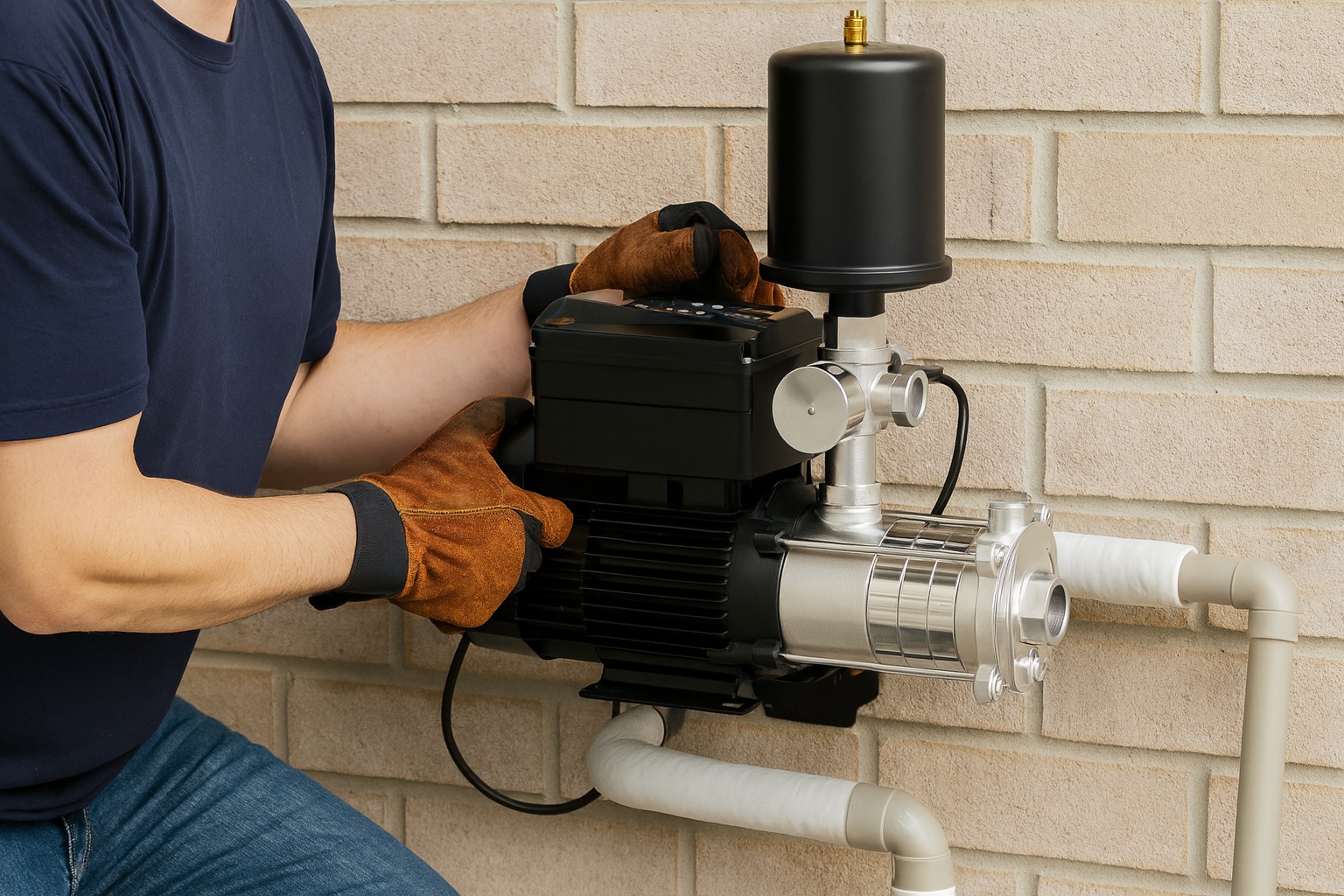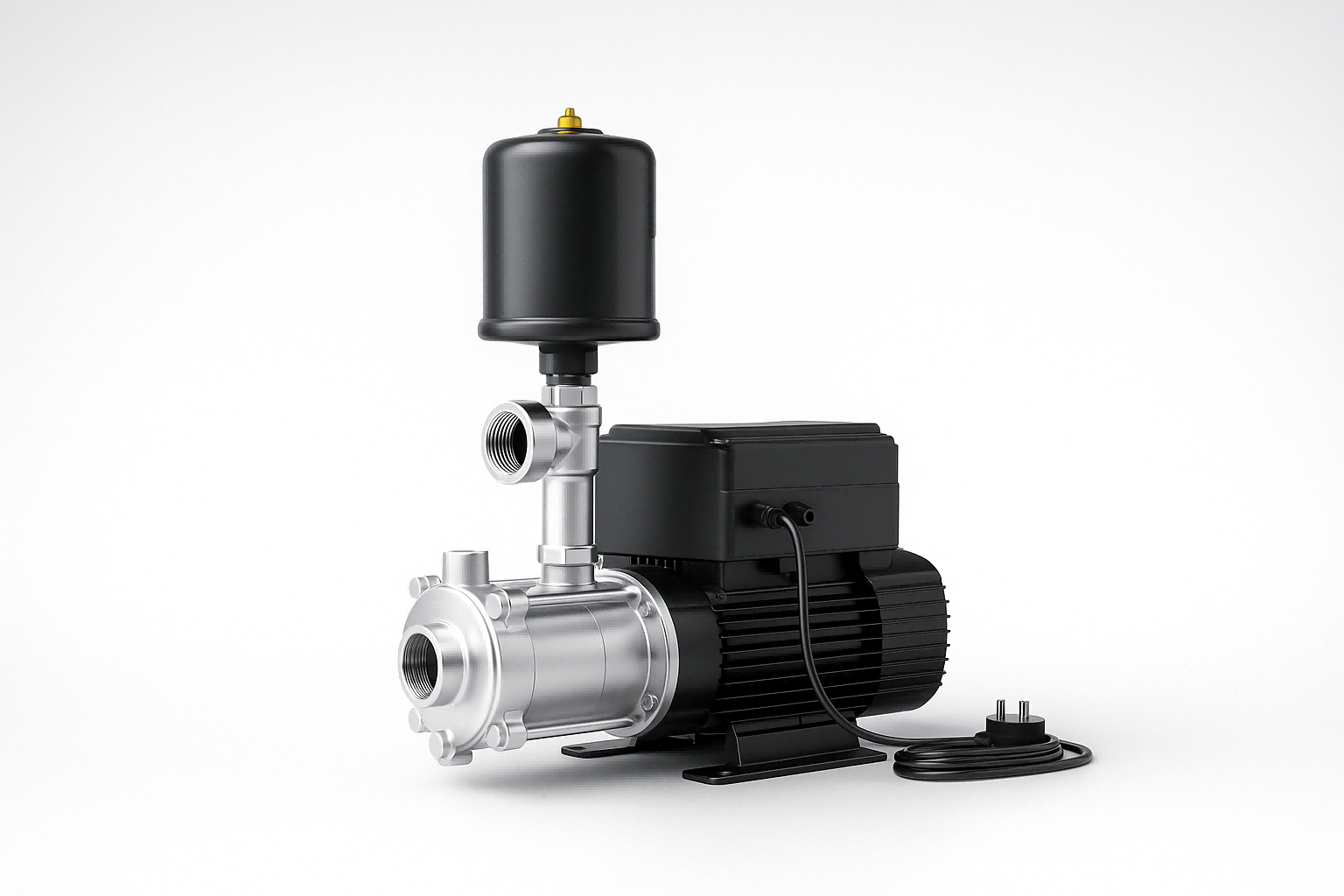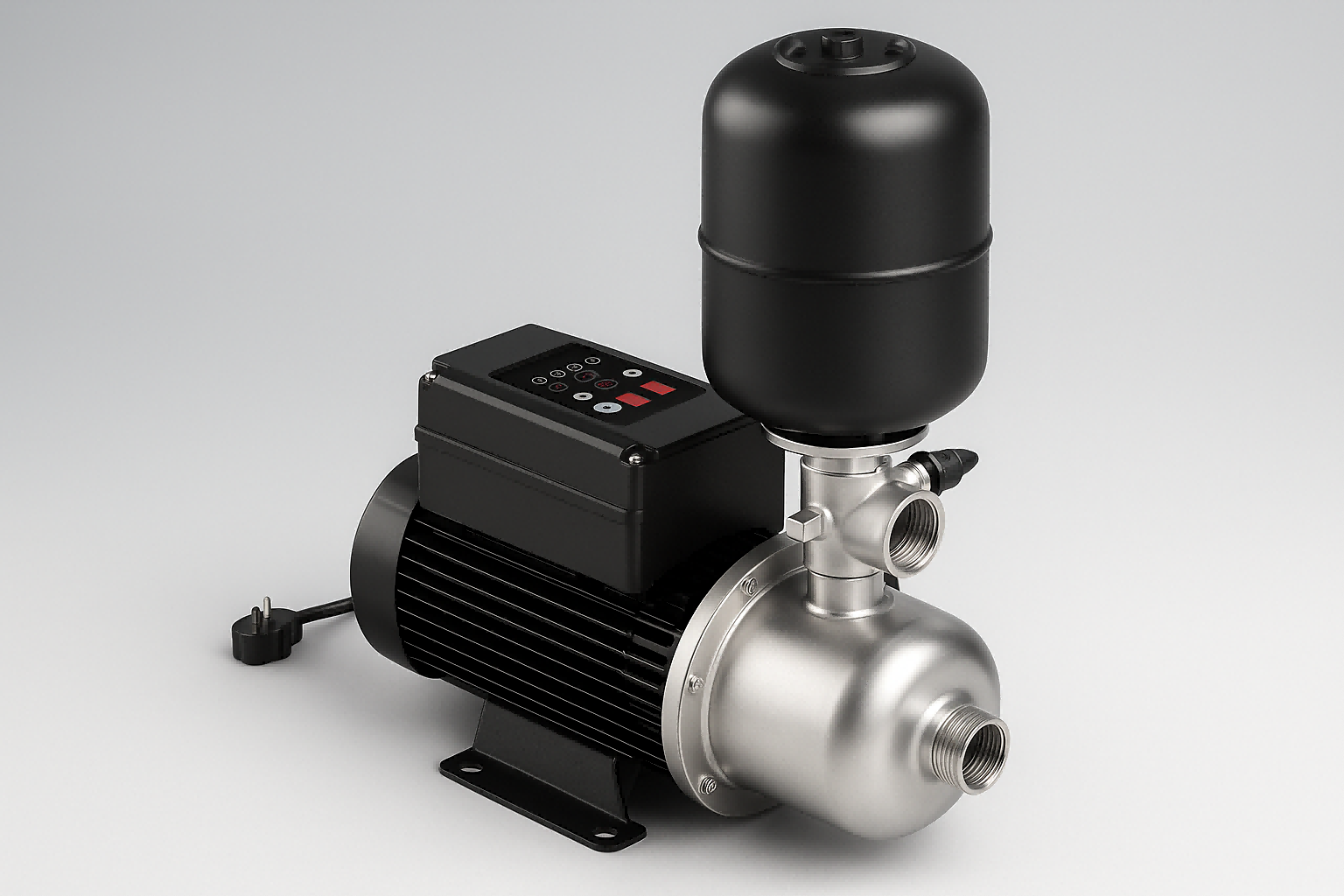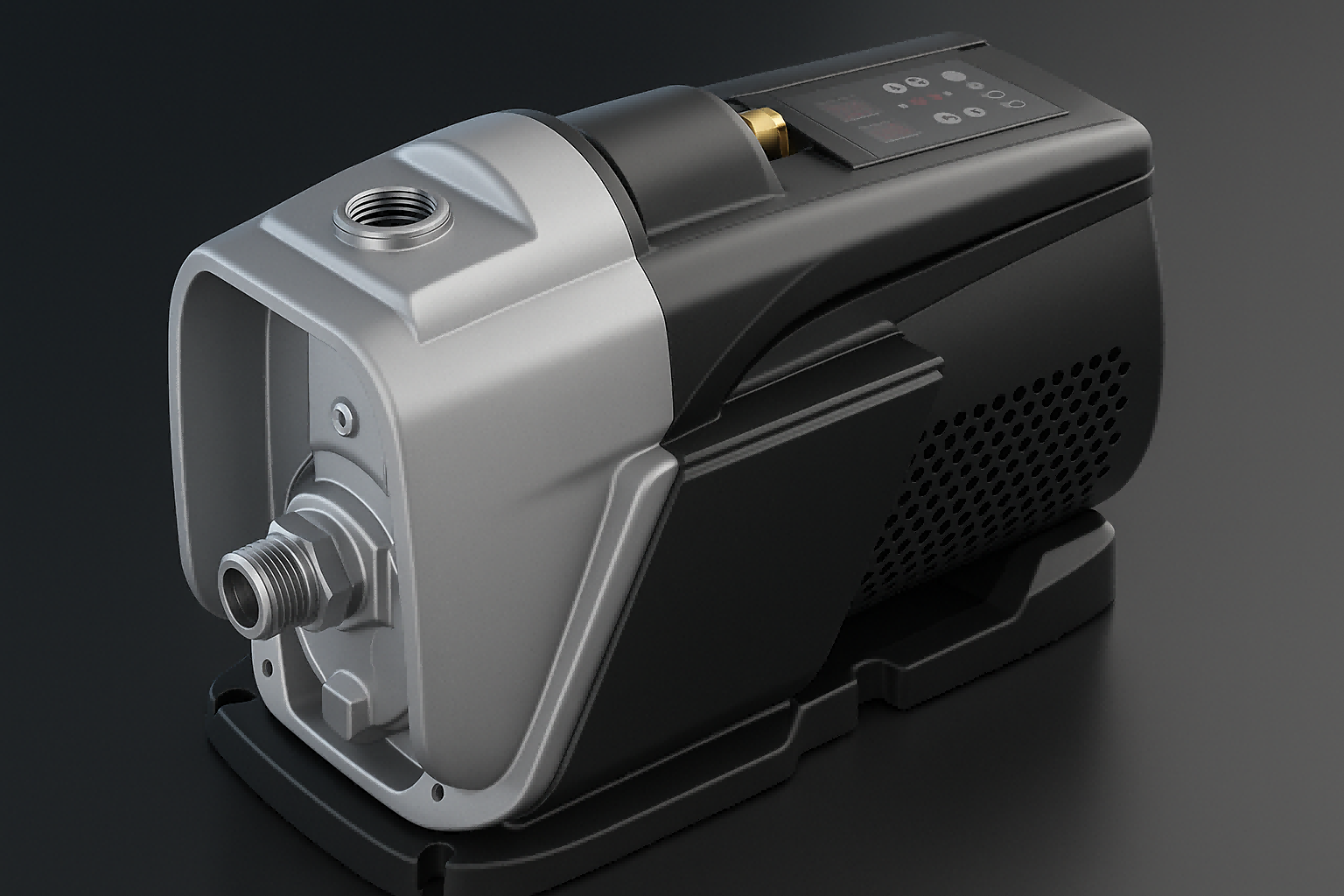What is the difference between a booster pump and a domestic pump?
Struggling with weak water flow from your taps and showers?
This frustrating lack of pressure can disrupt daily life.
The solution lies in understanding which pump your system truly needs.
A domestic, or normal, pump is designed to move water from one location to another, focusing on flow rate. In contrast, a booster pump is specifically engineered to increase the pressure within an existing water system, ensuring a strong and consistent flow where it's needed most.

Choosing the wrong pump can lead to inefficient performance, wasted energy, and ongoing frustration.
To make the best decision for your home, business, or clients, it's essential to grasp the fundamental differences between these two vital pieces of equipment.
Let's dive deeper into their specific functions, designs, and applications to help you identify the perfect solution for any water pressure challenge.
Understanding Pumps: The Basic Concepts
Are you confused by the technical jargon surrounding water pumps?
The sheer variety of types and functions can seem overwhelming.
Let's break down the basics to build a clear foundation.
At its core, a pump is a mechanical device that moves fluids like water by converting electrical or mechanical energy into hydraulic energy. The two main categories are centrifugal pumps, which use rotational force, and positive displacement pumps, which trap and force out a fixed volume of fluid.
A normal pump, often called a domestic or standard pump, serves the primary purpose of fluid transportation.
Its main job is to move a volume of water from a source, like a well or reservoir, to a destination, such as a home's plumbing system or an irrigation field.
While it generates enough pressure to overcome gravity and pipe friction, its design priority is maintaining a consistent flow rate, not significantly increasing the system's overall pressure.
What is a Normal Pump?
A "normal pump" is a general term for any standard pump designed to transport fluids from one point to another.
Its main goal is to create flow.
Think of it as the workhorse for moving water over distances.
It doesn't necessarily aim to dramatically increase the water pressure beyond what's needed for the transport itself.
These pumps are the foundation of most water supply systems, from simple home wells to large-scale municipal networks.
Common Applications of Normal Pumps
Normal pumps are incredibly versatile and form the backbone of countless fluid management systems.
Their applications are wide-ranging and critical to daily life and industry.
| Application Area | Specific Use Case |
|---|---|
| Water Supply Systems | Transporting water from wells, lakes, or municipal sources to homes and businesses. |
| Wastewater Management | Moving sewage and industrial wastewater to treatment facilities. |
| Agriculture | Pumping water for large-scale crop irrigation and livestock watering. |
| Chemical Processing | Transferring various chemicals and liquids within industrial plants. |
| Oil & Gas Industry | Moving crude oil and other fluids through extensive pipeline networks. |
Key Characteristics of Normal Pumps
The design and function of normal pumps are guided by a few core principles.
- Flow-Oriented: Their primary performance metric is flow rate, measured in gallons or liters per minute.
- Simpler Design: They often have a more straightforward construction without the complex sensors and controls found in specialized pumps.
- Variety and Flexibility: This category includes numerous types, such as centrifugal, submersible, and jet pumps, each tailored for specific tasks.
- Cost-Effectiveness: For general fluid transport, they are typically a more affordable initial investment compared to specialized pressure-boosting systems.
What is a Booster Pump and How Does It Work?
Are your showers weak and unsatisfying?
Do your appliances take forever to fill?
This is a classic sign of low water pressure, a problem a standard pump can't fix.
A booster pump is a specialized pump that increases the pressure of water already flowing within a system. It doesn't create the initial flow; instead, it "boosts" the existing pressure to a desired level, ensuring powerful and reliable performance at every outlet.
Understanding how these systems work reveals their importance in modern residential and commercial buildings.
A typical booster system draws water in via a suction connection.
This water is then pressurized, either within a small pressure vessel or directly through an intelligent, variable-speed motor.
The pump automatically senses when pressure drops—for instance, when a tap is opened—and activates to restore the pressure to a pre-set level.
This intelligent operation ensures you get strong, consistent pressure exactly when you need it, without wasting energy.
The Core Function: Pressure Enhancement
The fundamental purpose of a booster pump is to solve the problem of inadequate water pressure.
It acts as an amplifier for your water system.
When the system detects a drop in pressure below a certain threshold, the pump kicks in.
Advanced systems use a Variable Frequency Drive (VFD) to precisely control the motor's speed.
This allows the pump to add just enough energy to bring the pressure back to the desired level, providing a perfectly stable and constant supply without the pressure fluctuations common in older systems.
Where Booster Pumps Shine
Booster pumps are the ideal solution in any scenario where the existing water pressure is insufficient for the task at hand.
Their ability to maintain consistent pressure makes them invaluable in many settings.
- Residential Buildings: Essential for multi-story homes and apartment complexes to ensure strong showers and fast-filling taps on upper floors.
- Commercial Properties: Used in hotels, offices, and restaurants to supply adequate pressure to restrooms, kitchens, and fire suppression systems.
- Irrigation Systems: Provides the necessary pressure for sprinklers and drip lines to operate effectively over large areas.
- Industrial Processes: Maintains consistent pressure required for cooling systems, high-pressure cleaning, and other manufacturing applications.
The Anatomy of a Modern Booster System
Today's high-performance booster pumps are sophisticated engineering marvels designed for efficiency, durability, and quiet operation.
The best systems integrate advanced technology to deliver superior performance.
A Permanent Magnet Synchronous Motor (PMSM) combined with a VFD controller is at the heart of these systems.
This combination allows for incredibly quiet operation, often under 50dB, which is quieter than a library.
It also enables a "soft start" and "soft stop" function.
This gradually ramps the motor speed up and down, which drastically reduces mechanical stress on components and eliminates the hydraulic shock, or "water hammer," that can damage pipes.
This intelligent control provides a constant, stable pressure supply, customized to the user's exact needs.
Key Differences: Functionality, Design, and Efficiency
Choosing the wrong pump is a costly mistake.
It can lead to poor performance, high energy bills, and premature failure.
Understanding the critical differences in function, design, and efficiency is the key to making a smart, long-term investment.
The primary difference lies in their core purpose: normal pumps prioritize moving a volume of water (flow rate), while booster pumps focus on increasing the force of that water (pressure). This fundamental distinction dictates everything from their internal construction to their energy consumption.
This core difference in purpose leads to significant variations in their design and operation.
Normal pumps are often built for robustness and simplicity to handle various fluids and conditions.
In contrast, modern booster pumps are sophisticated systems packed with intelligent technology.
They feature built-in sensors and advanced controllers that automatically adjust performance based on real-time demand, ensuring optimal pressure while minimizing energy use.
This "smart" functionality is what sets them apart and makes them a superior choice for pressure-sensitive applications.
Flow Rate vs. Pressure: The Primary Distinction
This is the most important concept to grasp.
A normal pump is like a river; its job is to move a large quantity of water along.
A booster pump is like a dam's turbine; its job is to take that flowing water and give it immense force.
You would choose a normal pump when you need to drain a flooded basement or irrigate a large field, where volume is key.
You would choose a booster pump when you live on the top floor of an apartment building and want a shower with strong pressure, where force is key.
Design and Construction: From Simple to Smart
The internal design of these pumps reflects their different jobs.
Normal pumps often feature rugged, simple construction designed for reliability in moving water.
Advanced booster pumps, however, are built with a focus on precision, protection, and longevity.
A key feature in top-tier models is fully sealed electronics.
The main controller board is potted in a special compound, creating a 100% waterproof and dustproof seal with an IP67 rating.
This protects the sensitive electronics from moisture and condensation, which can prevent over 95% of moisture-related failures and extend the controller's life by 3-5 years.
Furthermore, these smart pumps include comprehensive protection systems, often monitoring up to 14 different parameters to safeguard against issues like dry running, overheating, voltage fluctuations, and even freezing.
| Feature | Normal Pump | Advanced Booster Pump |
|---|---|---|
| Primary Goal | Maximize Flow Rate | Maximize & Stabilize Pressure |
| Control System | Simple On/Off | Intelligent VFD Controller |
| Electronics | Basic, exposed components | Potted, IP67 waterproof PCB |
| Protection | Minimal (e.g., thermal overload) | Comprehensive (14+ protections) |
| User Interface | None or basic switch | Digital display with real-time data |
Energy Consumption and Long-Term Costs
A simple, normal pump that runs at full speed whenever it's on can consume a significant amount of energy.
A modern booster pump with VFD technology is far more efficient.
The VFD allows the motor to run at precisely the speed needed to maintain the target pressure, and no faster.
This means if you only open one small tap, the pump will run at a very low speed, consuming minimal power.
This intelligent power management can reduce electricity consumption by up to 50% compared to traditional systems.
Additionally, features like an integrated pressure tank reduce how often the pump needs to start and stop for small water uses.
This reduces pump cycling by as much as 70%, which not only saves energy but also dramatically extends the motor's lifespan, leading to lower long-term operational and maintenance costs.
How to Choose the Right Pump for Your Needs
Making the final decision can feel complex.
With so many options, how do you ensure you're selecting the perfect pump?
You need a clear framework to evaluate your options against your specific requirements.
Start by identifying your primary goal: do you need to move a large volume of water, or do you need to increase the pressure in an existing system? Once you've answered this, you can assess factors like material quality, smart features, and installation space to find the ideal match.
Beyond the core function, the long-term reliability and performance of a pump are determined by the quality of its components and the intelligence of its design.
Don't just look at the initial price tag; consider the total cost of ownership.
A pump built with superior materials and smart, energy-saving technology may have a higher upfront cost but will save you money over its lifespan through lower energy bills, fewer repairs, and a longer operational life.
Investing in quality from the start is the most cost-effective strategy.
Assessing Your Application Needs
Your specific situation is the most important factor.
A clear understanding of your problem will lead you directly to the right solution.
Use this simple guide to help you decide.
| If Your Primary Need Is... | Then You Should Choose a... | Why? |
|---|---|---|
| Moving water from a well to a storage tank | Normal Pump (Submersible or Jet) | The goal is to transfer volume; pressure is secondary. |
| Experiencing weak showers on the 2nd floor | Booster Pump | The problem is insufficient pressure within the existing plumbing. |
| Irrigating a large garden or farm | Normal Pump (Centrifugal) | The priority is delivering a high flow rate over an area. |
| Ensuring consistent pressure for all appliances | Booster Pump | It actively manages and stabilizes pressure for the entire system. |
| Draining a pool or flooded area | Normal Pump (Sump or Utility) | High-volume water removal is the only requirement. |
Evaluating Material Quality and Durability
The materials used in a pump's construction are a direct indicator of its quality and expected lifespan.
For any pump that handles drinking water, look for hydraulic components made from high-grade, corrosion-resistant materials.
The impeller, which is the heart of the pump, should ideally be made of AISI304 stainless steel or high-quality brass.
These materials resist rust and wear, ensuring both longevity and water safety.
The pump's motor is another critical area.
High-end motors use premium components like 600-grade silicon steel in the stator for better efficiency and high-quality bearings from reputable manufacturers.
These superior bearings can offer higher precision, quieter operation, and a significantly longer lifespan compared to standard alternatives.
Finally, the pump housing should be robust and, if installed outdoors, made from UV-resistant materials like high-grade ABS plastic to prevent degradation from sunlight.
Smart Features and User Interface
In today's connected world, the best pumps offer more than just raw power; they offer intelligence and control.
A modern booster pump should have an intuitive user interface that allows for easy operation and monitoring.
Look for a clear display with simple controls for turning the pump on/off and adjusting the target pressure.
The most advanced models provide a wealth of real-time data at the touch of a button.
A user should be able to easily cycle through displays showing critical operating parameters like current power consumption (in watts), motor speed (in RPM), input voltage, and the temperature of the internal electronics.
This level of insight allows for easy system diagnostics and performance monitoring.
At-a-glance LED indicators are also crucial, providing immediate visual feedback on the pump's status, such as whether it's in constant pressure mode, if it has detected a leak, or if there's a water shortage.
Optional WiFi connectivity for remote control and monitoring via a smartphone app is another feature that defines a truly premium, user-centric system.
Conclusion
Choosing between a normal pump and a booster pump comes down to a simple question: do you need to move water, or do you need to pressurize it?
Understanding this key difference is the first step toward a reliable and efficient water system.
FAQs
Can a normal pump be used as a booster pump?
No, a normal pump is designed for flow, not for significantly increasing pressure within a sealed system. Using it as a booster can be inefficient and damage the pump.
Do booster pumps use a lot of electricity?
Modern VFD booster pumps are highly energy-efficient. They only use the power needed to maintain pressure, often saving up to 50% on electricity compared to standard pumps.
How do I know if I need a booster pump?
You likely need a booster pump if you experience weak water flow from showers, slow-filling toilets or appliances, or a general drop in pressure when multiple taps are used.
Where is the best place to install a booster pump?
Install a booster pump on the main water line after the meter, typically in a dry, frost-free, and accessible location like a basement, garage, or utility closet.
Can a booster pump pull water from a well?
No, a booster pump is designed to increase pressure in a line that is already supplied with water. A dedicated well pump (like a submersible or jet pump) is needed to pull water from a well.
What is a VFD booster pump?
A VFD (Variable Frequency Drive) booster pump uses smart technology to adjust the motor's speed in real-time, maintaining constant pressure while saving significant energy.
How long do booster pumps last?
A high-quality, well-maintained booster pump can last for 10-15 years or more. Longevity depends on material quality, usage, and protections against issues like dry running.
What does a pressure tank do on a booster pump?
A pressure tank stores a small amount of pressurized water. This reduces pump cycling for small water uses, preventing water hammer and extending the pump's lifespan.








